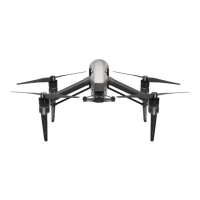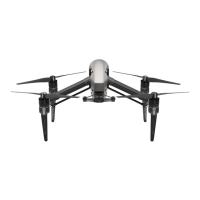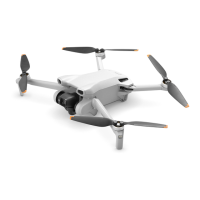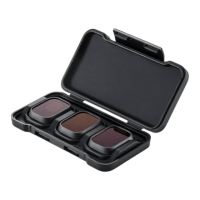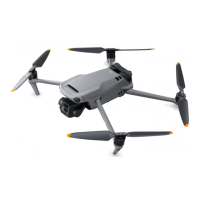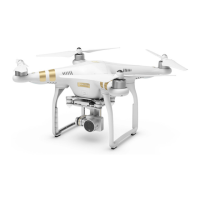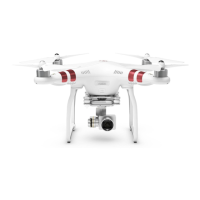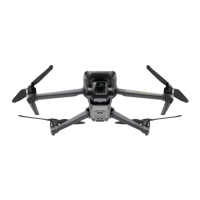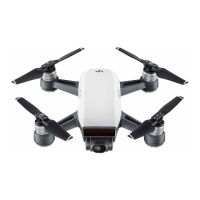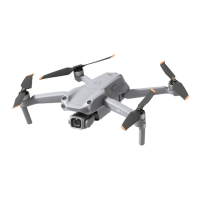DJI Inspire 3
User Manual
©
2023 DJI All Rights Reserved.
37
• Omnidirectional obstacle sensing is available in the horizontal direction when the
landing gear is raised. When the landing gear is lowered, there are two 20° sensor blind
spots at the front left and right of the aircraft that may aect obstacle sensing. See the
diagram above. Fly with caution.
• The gray area is the blind spot of the vision system, where the aircraft cannot detect
objects. Fly with caution.
• The various gimbal rotation and the lens length will change the FOV of the downward
vision system, and the blind spot of the downward vision system will change
accordingly. Fly with caution.
Using the Vision System
The positioning function of the downward vision system is applicable when GNSS signals are
unavailable or weak. It is automatically enabled in N-mode or T-mode.
The horizontal omnidirectional and upward vision systems will activate automatically when
the aircraft is powered on if the aircraft is in N-mode or T-mode, and Obstacle Avoidance is
set to Brake in DJI Pilot 2. The aircraft can actively brake when detecting obstacles when using
the horizontal omnidirectional, and upward vision systems. The horizontal omnidirectional
and upward vision systems work best with adequate lighting and clearly marked or textured
obstacles. Due to inertia, users must make sure to brake the aircraft within a reasonable
distance.
• Pay attention to the ight environment. The vision system and infrared sensing system
only work in certain scenarios and cannot replace human control and judgment. During
a ight, always pay attention to the surrounding environment and the warnings in DJI
Pilot 2, and be responsible for and maintain control of the aircraft at all times.
• Obstacle Avoidance is disabled during the landing gear transformation. Fly with caution.
• The aircraft cannot avoid moving obstacles such as people, animals, or vehicles. Fly with
caution.
• The downward vision systems work best when the aircraft is at an altitude from 0.5 to
30 m if there is no GNSS available. Extra caution is required if the altitude of the aircraft
is above 30 m as the vision positioning performance may be aected.
• The auxiliary bottom light can be set in DJI Pilot 2. If set to Auto, it is automatically
enabled when the environment light is too weak. Note that the vision system
performance may not be restored to the best state. Fly with caution if the GNSS signal
is weak.
• The vision system may not work properly over water. Therefore, the aircraft may not
be able to actively avoid water below it when landing. It is recommended to maintain
flight control at all times, make reasonable judgments based on the surrounding
environment, and avoid over-relying on the downward vision system.
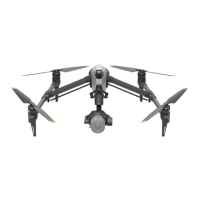
